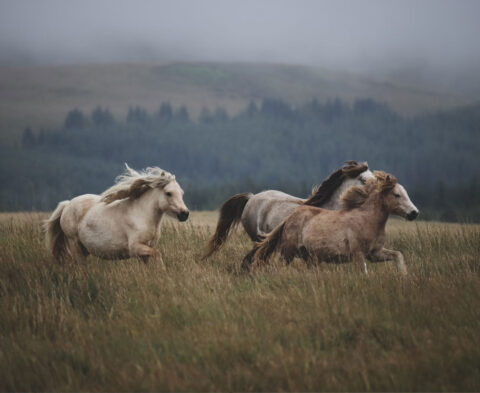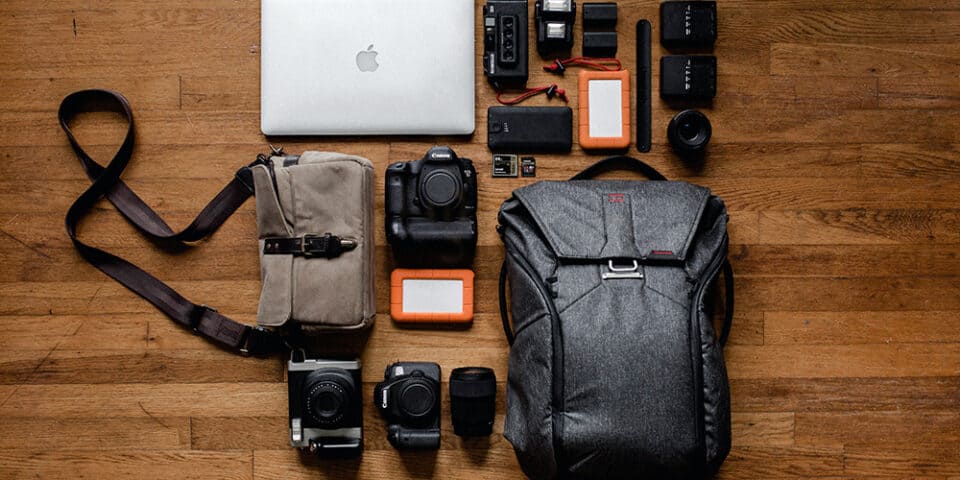Now’s a good time to revisit the Exposure Triangle as the season has changed into Autumnal equinox, which also means a change in outdoor lighting and sceneries that will entice a lot of people to head outside and make photographs and videos.
Many times we think of the exposure triangle as a photographic construct, but it is equally applicable to video; we are simply more constrained in our choices for video. The interdependencies remain. At this juncture, we’ll presume that we understand what shutter speed, aperture and ISO are.

The Exposure Triangle is a continuous entity. A change to any value necessitates a change to at least one, perhaps both of the other elements. If we want a higher shutter speed, then either we have to open the aperture or increase the ISO or some combination of the two. When we shoot in fully automatic, the camera’s CPU is doing all the work for us based on the meter reading. That’s great, right up until we choose to take some creative control of the triangle.
Let’s remember that the general plan for the triangle is to produce a “correct” exposure, but even when we choose to go “off spec” there is still a triangle to consider. There is also an old lighting construct known as Exposure Value or EV that can be very helpful in understanding the triangle’s balancing act. The Exposure Value of a given scene is an assigned number based on the amount of incident light that’s there. An EV value has no particular orientation to shutter speed, aperture or ISO. EV is mostly gone from our photographic conversations these days and that’s a shame because it makes understanding the exposure triangle much easier.
If you accept that any given shooting scene has an Exposure Value, then you can say that the triangle needs to deliver to that EV. Or, put more simply, you have an xx EV Triangle where xx is the actual Exposure Value number. Handheld light meters can still display exposure in EV, but most cameras don’t. What you can do, is take note of the exposure your camera offers to you and consult an EV table (it’s a learning process, gang) to see some of your exposure options.
Here’s a simple EV table to show you how this works. EV values are in the first four columns by ISO. The remaining columns show the correct shutter speed and aperture for a given EV value at the different ISOs. Many camera metering systems don’t go below EV 0 and many cameras don’t have shutter speeds above about 1/4000 but I’ve left 1/8000 in as newer cameras do.

Many cameras today have a Program (P) mode that allows the photographer the ability to override the settings chosen automatically by the camera. These can be “Scene” modes where the Program is changed in software to bias towards light gathering or depth of field or higher shutter speed. The icon of the running figure simply indicates a programed mode biased towards using a higher shutter speed. The icon of the mountain simply indicates a programed mode biased towards using a smaller aperture for more depth of field. These programs also have constraints written into them to always try to deliver an exposure according to the meter reading and which also to try to maintain a shutter speed safe for handholding, and if not possible to either signal the need for flash or to activate the built in flash if one exists.
There is absolutely nothing wrong with using any of these modes so long as they work for you. The camera manages the Exposure Triangle on your behalf and due to the millions of test images which have gone into the program development process, your success odds are very good indeed.
Where things seem to fall apart is when developing photographers become convinced that the only way to “be a photographer” is to shoot in fully Manual (M) mode. Statements like this have gone a long way to dissuade people from serious photography because things tended to go poorly, often because the photographer had not yet fully understood the Exposure Triangle. Remember that if you are using the light meter readings to set your exposure settings in fully manual (M) mode, you are doing exactly what the automatic and semi-automatic modes would be doing for you, only you are taking longer to get to the same place.
Here are some quick tables that show a variety of camera settings that all produce exactly the SAME exposure. What the different settings do while producing the same exposure is shown in the column titled WEIGHTING
| Shutter Speed | Aperture | ISO | Exposure Value | WEIGHTING |
| 1/125 | f/16 | 100 | 15 | The “Sunny 16” guideline from the days of film, perfect for a summer’s day |
| 1/30 | f/32 | 100 | 15 | Weighted towards maximum depth of field at the expense of shutter speed |
| 1/1000 | f/5.6 | 100 | 15 | Weighted towards a faster shutter speed, for freezing action at a sporting event or similar fast moving subject |
Table 1 : A Sunny Day
| Shutter Speed | Aperture | ISO | Exposure Value | WEIGHTING |
| 1/500 | f/4 | 800 | 10 | General program settings for a well lit arena |
| 1/500 | f/8 | 3200 | 10 | Weighted towards increasing depth of field with the risk of slightly higher digital noise |
| 1/2000 | f/5.6 | 6400 | 10 | Weighted towards a faster shutter speed, for to stop hockey players at full speed |
Table 2 : Indoor Arena
| Shutter Speed | Aperture | ISO | Exposure Value | WEIGHTING |
| 1/60 | f/2 | 200 | 7 | General program settings for a well lit arena |
| 1/15 | f/11 | 1600 | 7 | Weighted towards increasing depth of field but keeping noise down, and requiring a tripod |
| 1/500 | f/4 | 6400 | 7 | Stopping a cyclist moving laterally |
Table 3 : Just After Sunset
You see from these tables that while the actual exposure value will be the same in each scenario by manipulating one or more settings, requires adjustment of the remaining ones to maintain accurate exposure. All too often I find myself helping folks who have switched to manual because the camera would not give the higher shutter speed that the photographer wanted in automatic mode because the programmed settings ran out of ISO and or aperture and the resulting image is too dark. I’ve also encountered folks seeking “bokeh” on a bright sunny day and who have opened up the aperture to f/1.4 and switched to manual because the camera could not deliver an automated combination of aperture and ISO that would fit. To maintain a consistent exposure, we have to maintain equilibrium in the exposure triangle.
As a photographer or videographer, learning to see the light, and understanding how light impacts your creative decisions regarding the elements of the Exposure Triangle is critical to growth and success. I am hopeful that this article helps you achieve this goal, or helps recall knowledge developed in the past.




